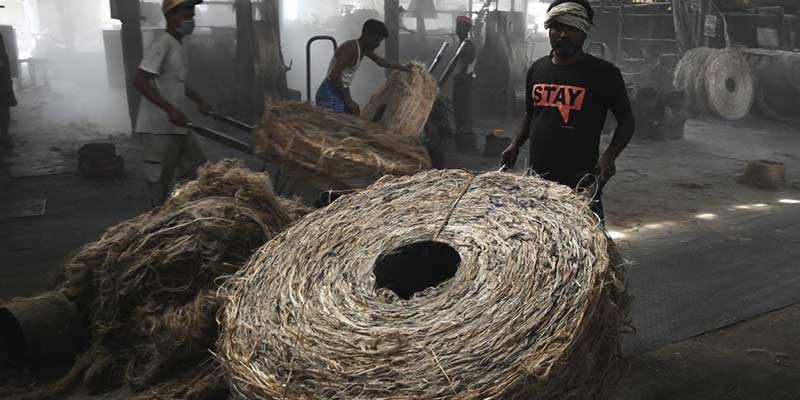- India
- Jan 23
Centre increases MSP on raw jute to Rs 5,650/quintal
• The Cabinet Committee on Economic Affairs (CCEA), chaired by Prime Minister Narendra Modi, approved a Minimum Support Price (MSP) of Rs 5,650 per quintal for raw jute for marketing season 2025-26, an increase of 6 per cent or Rs 315 over the previous MSP.
• The new MSP ensures return of 66.8 per cent over all-India weighted average cost of production and will benefit growers.
• The government has increased MSP of raw jute from Rs 2,400 per quintal in 2014-15 to Rs 5,650 per quintal for 2025-26 marketing season, an increase of 2.35 times.
• The approved MSP of raw jute for marketing season 2025-26 is in line with the principle of fixing MSP at a level of at least 1.5 times all India weighted average cost of production as announced by the government in the Budget 2018-19.
• Jute Corporation of India (JCI) will continue as central government nodal agency to undertake Price Support Operations and the losses incurred, if any, in such operations, will be fully reimbursed by the central government.
Jute industry in India
• India is the largest producer of jute, also called the “golden fibre”.
• Jute is a cash crop and it is sown from March-May and harvested from June end to September upon the weather conditions.
• Jute is an important natural fibre crop in India next to cotton. In trade and industry, jute and mesta crop together known as raw jute as their uses are almost same.
• Raw jute was originally considered as a source of raw material for packaging industries only. But it has now emerged as a versatile raw material for diverse applications, such as, textile industries, paper industries, building and automotive industries, use as soil saver, use as decorative and furnishing materials, etc.
• Raw jute, being bio-degradable and annually renewable source, is considered as an environment-friendly crop and it helps in the maintenance of the environment and ecological balance.
• Jute as a natural fibre has some definite inherent advantages. Its silky luster, high tensile strength, low exhaustibility, considerable heat resistance and long staple length are the qualities that cannot be matched by synthetic fibre.
• Further attraction of jute lies in its easy availability, inexhaustible quantity at a comparatively cheaper rate. Moreover, it can easily be blended with other natural and man-made fibres.
• The jute industry is one of the major industries in the eastern region, particularly in West Bengal. It is estimated that the jute industry provides direct employment to four lakh workers in organised mills and in diversified units including tertiary sector and allied activities and supports the livelihood of 40 lakh farm families.
• In addition to this there are a large number of persons engaged in the trade of jute.
• As on March 31, 2024, there are 111 composite jute mills out of which the state of West Bengal has 82 jute mills, Andhra Pradesh has 14 mills.
• The government provides support to the jute growers not only through MSP operations by the Jute Corporation of India but also through direct purchase of jute sacking valued at around Rs 12,000
crore annually for packing food grains by invoking provisions under the Jute Packaging Material (Compulsory Use in Packing Commodities) Act, 1987.
• This is a major support not only to the jute farmers but also to jute mill workers.
• The Jute Corporation of India was established in 1971. It is the official agency of the ministry of textiles responsible for implementing the MSP policy for jute producers and serves as a stabilising agency in the raw jute market. JCI also undertakes commercial operations, procuring jute at prices above the MSP on commercial consideration to generate profits.
• The schemes for promotion of jute sector are primarily implemented by the National Jute Board, a statutory body established under National Jute Board Act, 2008 for development and promotion of jute sector.
• Jute-ICARE has been launched for improving fibre quality and productivity and reducing the cost of jute production and increasing income of jute farmers by at least 50 per cent through promotion of certified seeds, better agronomic practices and use of microbial reusing of the jute plant. The programme has shown enormous promise so far.
• An e-platform “JUTE-SMART” (Jute Sacking Supply Management and Requisition Tool) has been implemented for procurement of jute sacking from November 1, 2016.
Manorama Yearbook app is now available on Google Play Store and iOS App Store



